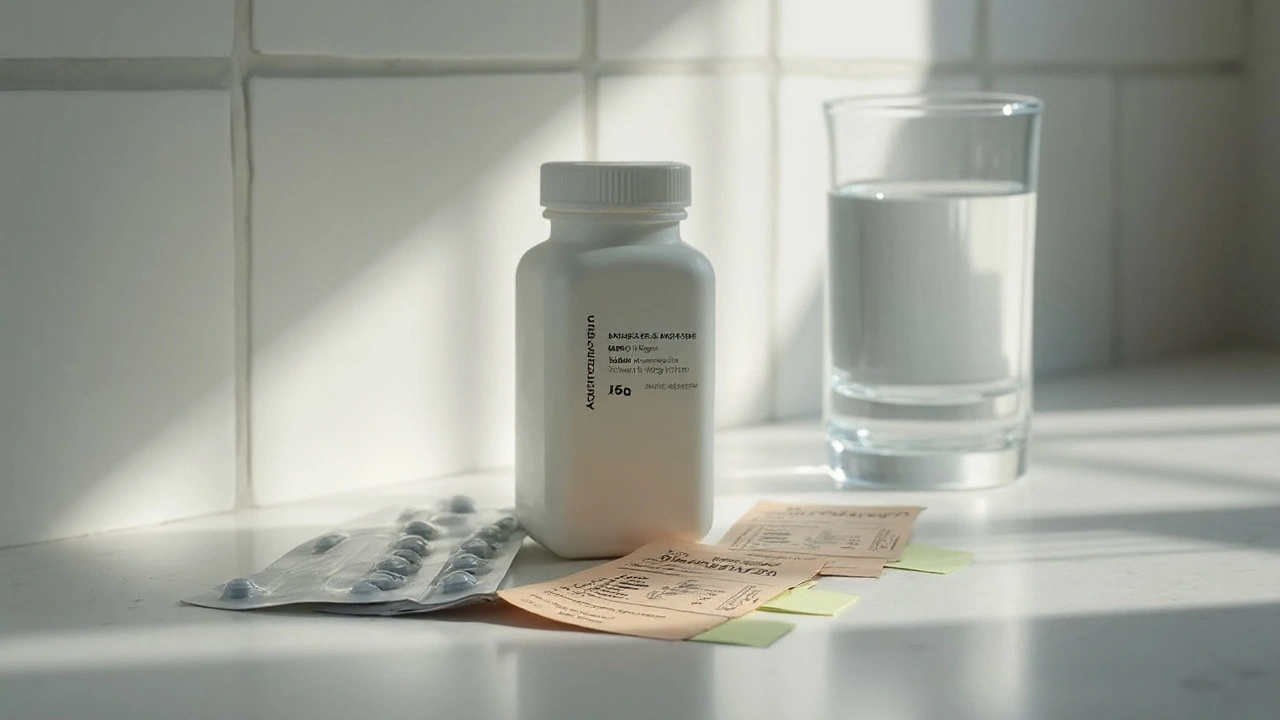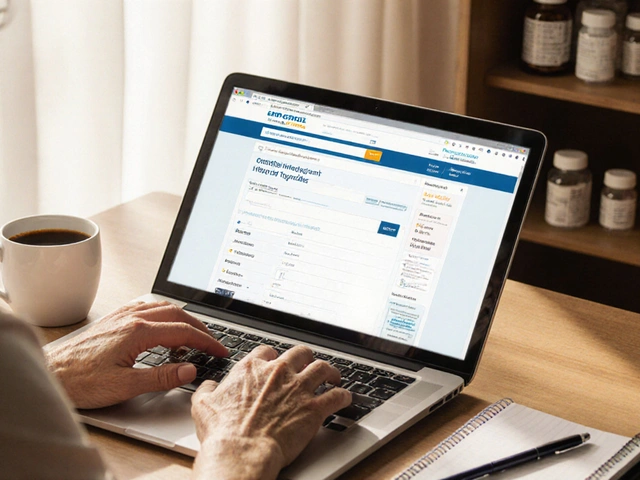
Hunting for the cheapest legit generic Tylenol online without risking counterfeits or paying silly shipping fees? Here’s the playbook that actually works in New Zealand right now. I’ll show you what to buy (hint: it’s called paracetamol here), where to get it safely, how to compare prices like a pro, and the exact safety checks so you don’t accidentally take too much. You’ll walk away ready to order with confidence and keep more of your money.
What “generic Tylenol” actually is (and the right product to pick)
Quick translation: Tylenol is the US brand name for acetaminophen. In New Zealand (and most of the world), the same ingredient is called paracetamol. So when you’re looking for generic Tylenol online from NZ sites, search for “paracetamol.” It’s the same medicine, just a different name.
Forms you’ll see:
- Tablets/caplets: 500 mg immediate-release (the standard adult option). Common pack sizes: 20 (general sale), 50-200 (pharmacy-only online).
- Modified-release: 665 mg (often labeled “Osteo”). For longer-lasting pain relief, still paracetamol. Pharmacy-only.
- Liquid: often 250 mg per 5 mL for adults who prefer liquid; children’s strengths vary (120 mg/5 mL or 160 mg/5 mL are common).
- Effervescent/sachets: dissolve in water; check total mg per dose the same way.
What to choose:
- Everyday headaches, fever, period pain: 500 mg tablets. Most cost-effective for adults.
- Overnight or longer-lasting pain: 665 mg modified-release tablets (don’t crush or split these).
- Kids: use liquid paracetamol dosed by weight (more on dosing in the safety section). Avoid adult tablets unless advised by a pharmacist.
Picking a pack size: general rule, bigger packs lower the unit price, but in NZ the very cheapest single pack is often a 20 x 500 mg supermarket home brand. If you’re ordering online, pharmacy-only 100-200 packs usually win on per-tablet price-just factor in shipping. Check expiry dates on product pages; a short date can erase the savings if you won’t use the pack in time.
How to read the label fast:
- Active ingredient: paracetamol (same as acetaminophen/Tylenol).
- Strength: 500 mg (immediate-release) or 665 mg (modified-release).
- Directions: adults typically 1-2 tablets every 4-6 hours for 500 mg (max details below), but always follow the exact pack instructions.
- Hidden paracetamol: cold/flu/all-in-one medicines often include it-don’t double up by mistake.
Tylenol vs Panadol vs generic: different brands, same core ingredient. Branded extras like “Rapid” are about formulation (e.g., sodium content for faster dissolve), not stronger medicine. If you want the lowest price, go plain generic paracetamol 500 mg.
Safe places to buy online in NZ (and what to avoid)
If you shop from New Zealand-based pharmacy websites, you can get paracetamol cheaply and avoid counterfeit risk. Here’s how to verify a site is legit:
- Registration: the site should clearly name its registered pharmacist and pharmacy, with a current Pharmacy Council of New Zealand registration number.
- Physical details: a real NZ business presence (company name, NZBN) and clear customer service info. A .co.nz domain alone isn’t proof.
- Product listing: NZ-approved packaging with a local sponsor or supplier named on the label. Ingredients and warnings match NZ norms.
- Supply category cues: larger pack sizes are marked as “pharmacy-only,” which is correct. If a random marketplace sells 500-count bottles with no pharmacy controls, that’s a red flag.
Where to start:
- NZ online pharmacies: look for established chains and independent pharmacies with clear registration details. Many offer click & collect or quick courier delivery.
- Supermarket sites: for 20-tablet packs of 500 mg, home brands are usually the cheapest ticket. Availability online varies by retailer.
- International pharmacies: not worth it for paracetamol. Shipping and GST usually cancel any tiny unit-price win, and the risk profile is higher.
How to spot risky sellers:
- “No questions asked” bulk packs with suspiciously low prices and no pharmacist details.
- Medical claims that don’t match paracetamol’s known uses (“cures back pain forever”).
- Reviews that are copy-pasted or focus on shipping speed only, not the product.
- No expiry date info and blurry photos of the packaging.
Quick safety check for imports: NZ allows personal importation of some medicines for personal use in small quantities, but there’s no reason to import paracetamol. It’s cheap locally and regulated. Stick to NZ-registered suppliers and you’ll save money and stress.

Paying the least: unit-price math, shipping, and 2025 pricing
This is where most people leak money. The trick is simple: calculate the cost per 1,000 mg and include shipping and GST. Paracetamol dosing uses 500 mg chunks, so comparing on 1,000 mg (1 gram) makes price differences obvious across tablets and liquids.
Formulas that make it easy:
- Cost per 1,000 mg (tablets) = price ÷ (total mg in pack ÷ 1,000).
- Total mg in pack (tablets) = tablet strength × number of tablets.
- For liquids: check mg per 5 mL, convert to mg/mL, then multiply by bottle volume.
Example: a 20-pack of 500 mg tablets has 10,000 mg total. If it costs $2.00, that’s $0.20 per 1,000 mg. A 100-pack at $6.00 has 50,000 mg, so $0.12 per 1,000 mg-cheaper, even before shipping.
What I’m seeing in 2025 (NZ): supermarket or pharmacy home-brand 20 x 500 mg often sits near $1.50-$3.50. Pharmacy-only 100-200 packs are usually the best per-gram deals. Modified-release 665 mg is pricier per gram but can be worth it if it means fewer night-time doses.
Shipping and GST pitfall: a $4.99 shipping fee can turn a “cheap” $2.00 pack into $6.99 delivered, which is worse than grabbing a home brand at your next grocery run. If you’re ordering online, bundle items (e.g., kids’ paracetamol, a thermometer, plasters) to spread the courier cost or hit free-shipping thresholds.
Here’s a quick comparison to ground your expectations. These are typical ranges in NZ right now, not endorsements-always check the live price on the site:
| Product | Common pack size | Typical 2025 price range (NZD) | Total mg in pack | Cost per 1,000 mg (approx.) | Notes |
|---|---|---|---|---|---|
| Paracetamol tablets 500 mg (generic) | 20 | $1.50-$3.50 | 10,000 mg | $0.15-$0.35 | General sale; cheapest single pack; good add-on to grocery order |
| Paracetamol tablets 500 mg (generic) | 100 | $4.99-$9.99 | 50,000 mg | $0.10-$0.20 | Pharmacy-only online; lowest unit price; watch shipping |
| Paracetamol modified-release 665 mg | 96 | $6.99-$12.99 | 63,840 mg | ~$0.11-$0.20 | Longer-lasting; do not crush or split; dosing differs |
| Paracetamol liquid 250 mg/5 mL (adult) | 200 mL | $3.99-$7.99 | 10,000 mg | $0.40-$0.80 | Convenient for those who can’t swallow tablets |
| Children’s paracetamol 120-160 mg/5 mL | 100-200 mL | $5.99-$14.99 | Varies | Higher per gram | Choose strength by age/weight; keep dosing syringe |
Three smart ways to pay less:
- Buy the biggest pack you’ll safely use before expiry, once you’ve included shipping in your math.
- Stick to plain generics, not “rapid” or “extra” unless you have a clear reason.
- Bundle orders to hit free shipping, or click & collect if the pharmacy offers it.
When “cheap” is a trap:
- Unknown marketplace sellers with no pharmacy details, bulk imported tubs, or labels that don’t match NZ standards.
- Very short expiry dates that will force you to waste half the pack.
- Postage from overseas that quietly adds $15-$25 at checkout.
Safety checklist: dosing, interactions, and when to skip it
Paracetamol is simple and effective when used right. It can also cause serious liver harm if you take too much, combine products by mistake, or drink heavily while dosing. This is the part worth getting exact.
Standard adult guidance (NZ):
- Immediate-release 500 mg: 1-2 tablets every 4-6 hours as needed.
- Maximum adult dose: 4,000 mg (4 g) in 24 hours. That’s eight 500 mg tablets total.
- Older adults or low body weight: you may need a lower maximum; ask a pharmacist.
- Modified-release 665 mg: dosing intervals differ (often 1-2 tablets every 6-8 hours; max 6 tablets/day). Follow the specific pack instructions.
Children (typical NZ guidance):
- Dose by weight, not age, using the product’s dosing chart.
- Common dose: 15 mg/kg per dose every 4-6 hours as needed, max 60 mg/kg/day.
- Use the supplied syringe/spoon; kitchen teaspoons are inaccurate.
- Do not use modified-release tablets in children unless a clinician says so.
Key safety rules:
- One paracetamol product at a time. Many cold/flu remedies already include paracetamol.
- Alcohol: heavy drinking increases liver risk; if you’ve had several drinks, be extra cautious or talk to a pharmacist before taking any.
- Liver disease: get pharmacist or GP advice before use; you’ll likely need a lower daily maximum.
- Warfarin: regular use of paracetamol can raise INR; occasional short-term use is usually fine, but monitor if you’re taking repeated doses.
- Pregnancy and breastfeeding: paracetamol is generally preferred for pain/fever; use the lowest effective dose for the shortest time. If you need more than a few days, check in with your midwife/GP.
- Red flags: severe abdominal pain, yellowing skin/eyes, confusion, or if you suspect an overdose-seek urgent medical help immediately.
Why generics are fine: NZ-approved generic paracetamol must meet the same quality and performance standards as brands. That means the same active ingredient and expected effect, under oversight from Medsafe and used widely in the New Zealand Formulary.
When to pick ibuprofen instead: for inflammatory pain (sprains, dental pain, period cramps), ibuprofen may work better; many people alternate or switch depending on response. If you have stomach issues, kidney disease, are pregnant (especially later stages), or take certain medicines, paracetamol may be the safer first choice. Ask a pharmacist if you’re unsure.

Quick compare, checklist, and a simple plan to order today
You want a fast answer. Here’s your shortcut, step by step.
- Decide your product: for most adults, paracetamol 500 mg tablets (generic) is the value pick.
- Check your cupboard: avoid buying if you already have a cold/flu remedy with paracetamol in it.
- Pick a seller: choose an NZ-registered online pharmacy or your supermarket’s online store.
- Compare unit price: use the cost-per-1,000 mg math and include shipping.
- Check expiry date: you want at least 12 months if you’re buying a larger pack.
- Add a dosing tool: for kids, make sure you get the right syringe; for adults, no tool needed.
- Place order: keep the order confirmation email and batch/expiry info when it arrives.
Buying checklist (print this bit):
- Product name says “paracetamol,” not a random herbal mix.
- Strength matches your plan (500 mg tablets or the right children’s liquid strength).
- Pack size suits how much you’ll use before expiry.
- Site lists a registered NZ pharmacist and pharmacy details.
- Unit price beats your local supermarket once shipping is counted.
- You’ve read the dosing label and know your maximum per day.
Best for / not for:
- Best for: tension headaches, fever, toothache, period pain, cold/flu symptoms when NSAIDs aren’t suitable.
- Not for: strong inflammatory pain needing an anti-inflammatory, or long-term daily use without clinician advice.
Alternatives worth knowing:
- Brand (Panadol, Tylenol via import) vs generic: same active ingredient; generic wins on price.
- Ibuprofen: better for inflammation; has stomach and kidney cautions.
- Topical heat/ice, stretching, fluids: free and often effective add-ons for minor pain.
FAQ (rapid-fire):
- Is generic as good as Tylenol? Yes. Same active ingredient and effect when NZ-approved.
- Can I import Tylenol from the US? You could, but there’s no point-paracetamol is cheap here and regulated.
- How long does shipping take? Most NZ pharmacies deliver in 1-3 business days; check rural allowances.
- What if I miss a dose? Take it when you remember if you still need it; don’t double up.
- Does paracetamol make you sleepy? Not typically. If a cold/flu combo makes you drowsy, it’s usually another ingredient.
Next steps / troubleshooting:
- If the unit price online isn’t beating your supermarket: buy one 20-pack in your next grocery order and revisit bulk pharmacy buys later.
- If the pharmacy site looks sketchy: search for its name plus “Pharmacy Council NZ” and confirm it’s registered. If you can’t confirm, walk away.
- If you rely on paracetamol most days: time to speak to your GP or pharmacist about the underlying cause and safer long-term planning.
- If you take warfarin: stick to short courses and check your INR if you’re using it regularly.
- If you drink alcohol: space doses widely and stay well under the daily maximum; ask a pharmacist if unsure.
Ethical buy-now nudge: open a tab for your go-to NZ pharmacy, search for buy online cheap generic tylenol or “paracetamol 500 mg tablets (generic),” filter by lowest price, then confirm the details above. Two minutes of checks saves dollars and keeps you safe.
Sources behind this guidance: New Zealand Formulary (adult and child dosing), Medsafe (medicine approvals and safety communications), Pharmacy Council of New Zealand (registration and standards), and long-standing dosing norms used by hospital and community pharmacists. The names and rules here match what you’ll be told at the counter-just distilled so you can act fast online.





Comments (8)
Michelle Pellin
Buy the 500 mg generic paracetamol for everyday use, it’s the best value and exactly the same active ingredient as branded Tylenol.
Stick to NZ-registered pharmacies or supermarket home brands for small packs, and do the cost-per-1,000 mg math the post describes before you click buy.
When ordering, always check the listed expiry - no point saving a few cents if half the pack expires in a month.
If you have liver disease or drink heavily, treat the daily maximum as a hard rule and talk to a pharmacist before routine use.
Bundle other pharmacy items to hit free shipping, or pick click & collect to bypass courier fees and still get the lower per-tablet price from larger packs.
Keiber Marquez
Buy local, save money, dont import garbage that takes weeks to arrive with fake labels and extra charges.
Those big overseas tubs are sketchy and the checkout surprises kill any savings, plain and simple.
Price check, factor in shipping, then end it there.
Lily Saeli
Choosing generics is a tiny act of everyday ethics, it’s practical and keeps healthcare affordable for more people.
Using paracetamol sensibly is a small responsibility we owe to our bodies and to the system that keeps meds accessible.
Watch the labels, read dosing by weight for kids, and do not mix products that might hide paracetamol in multi-symptom remedies.
When someone uses painkillers daily it reveals a deeper need for care and follow up, so see a clinician if dependence seems likely.
Buying smart online is fine but it should not replace thoughtful use and occasional professional review.
Monika Kosa
There is so much weirdness with big pharma and supply chains these days, that is why checking the pharmacy registration is crucial and not negotiable.
Anyone who thinks a random marketplace listing with no pharmacist name is fine is playing with risk, and it only takes one dodgy batch to screw up trust.
Keep receipts, batch numbers and expiry info when your order arrives, take photos of the pack if it looks off, and report anything suspicious to the regulator.
People forget that even small OTC meds go through lots of handlers, and unchecked sellers can slip bad labels into legitimate-looking packaging.
Buying local and verified is boring but it actually keeps you safer long term and reduces odd surprises.
Derek Dodge
Solid tip on the 1,000 mg unit math, that alone saved me a few bucks last month.
AARON KEYS
Practical checklist that everyone should bookmark, and a few additions from my side to make the process idiot-proof.
First, read the ingredient line on the product photo and ensure it lists paracetamol only, followed by the exact strength in mg per tablet or per 5 mL for liquids.
Second, when comparing prices, convert bottle or pack volumes to total mg before dividing the price so you compare apples with apples rather than pack counts that are misleading.
Third, do not buy modified-release formulations casually; they are designed for specific dosing patterns and will not behave like immediate-release tablets if split or crushed.
Fourth, keep a dosing log if you are taking paracetamol repeatedly for more than a couple of days, noting time and amount so you never approach the 4 g a day limit by accident.
Fifth, when buying for children, ensure the product provides a clear weight-based dosing chart and includes a properly marked dosing syringe; kitchen spoons are inaccurate and will underdose or overdose.
Sixth, check the pharmacy website footer or about page for the registered pharmacist name and a Pharmacy Council registration number, then cross-check that number on the Pharmacy Council site before you trust repeated purchases.
Seventh, if a listed price looks dramatically lower than competitors, inspect product photos closely for packaging language that suggests an import or non-NZ sponsor - domestic packaging will name a local sponsor or distributor.
Eighth, use click & collect when possible to avoid courier costs and to inspect the product before accepting it if the pharmacy allows returns for faulty OTC goods.
Ninth, consider buying a 100–200 pack only if you will actually use it before expiry, otherwise the per-tablet saving is pointless.
Tenth, never combine paracetamol with other cough or cold medicines that do not explicitly list whether they contain paracetamol, and always read the active ingredient list, not just marketing headers.
Eleventh, for people on warfarin or with liver disease, liaise with your clinician about a safer maximum daily dose and set reminders if you must use paracetamol regularly.
Twelfth, if you are shopping from a supermarket site for a cheap 20-pack, factor in the convenience of grabbing it during a weekly shop versus paying shipping for a bulk pack even if the unit cost favors the bulk option.
Finally, keep records of your purchases and batch numbers for at least a few months in case there are recalls or safety notices, and subscribe to Medsafe alerts in New Zealand if you frequently buy OTC meds online.
Summer Medina
i kept buying the 'rapid' versions thinking they worked better but they just cost more and sometimes make my stomach feel odd the next day
the plain generic 500 mg is what i use now and its fine and cheap and i stash a 20 pack in the pantry for headaches
one annoying thing is sites that hide the expiry until checkout i encountered that twice and its bogus it should be front and center not some hidden line at checkout
also those huge tubs from unknown sellers look sus like why would a legit company sell 500 count bottles to random marketplaces without a pharmacist listed
if you buy liquids for kids dont even think about using spoons its sloppy use the syringe that comes with it and label the bottle if you have multiple kids so nobody grabs the wrong strength
i also learned the hard way that mixing cold tablets with paracetamol syrups in the same day is asking for trouble so now i check the active ingredients every single time
Gail Hooks
Love the practical reminders and the dosing sanity check, the emoji for thumbs up is appropriate here 👍
Also, gentle reminder to keep meds out of reach of kids and to store them in a cool dry place, that small step avoids a lot of drama later 😊